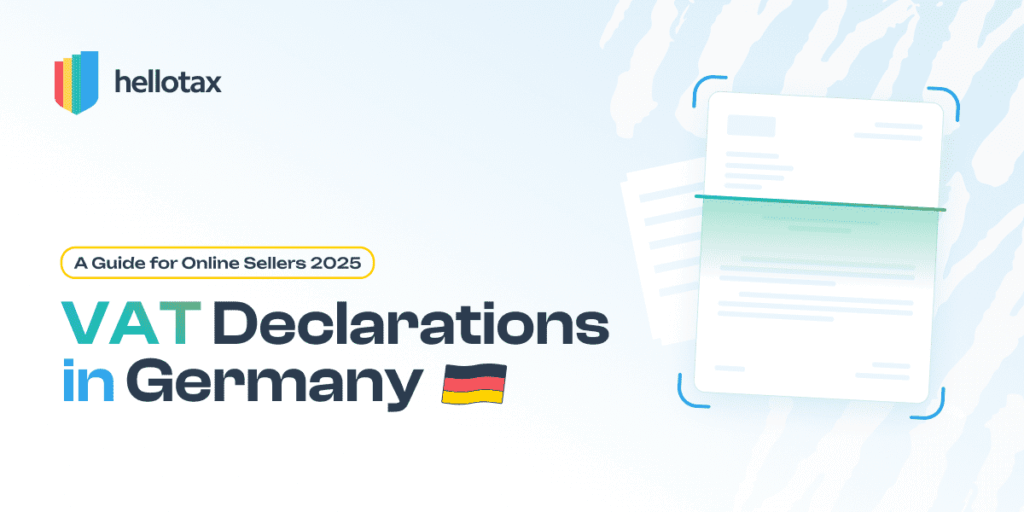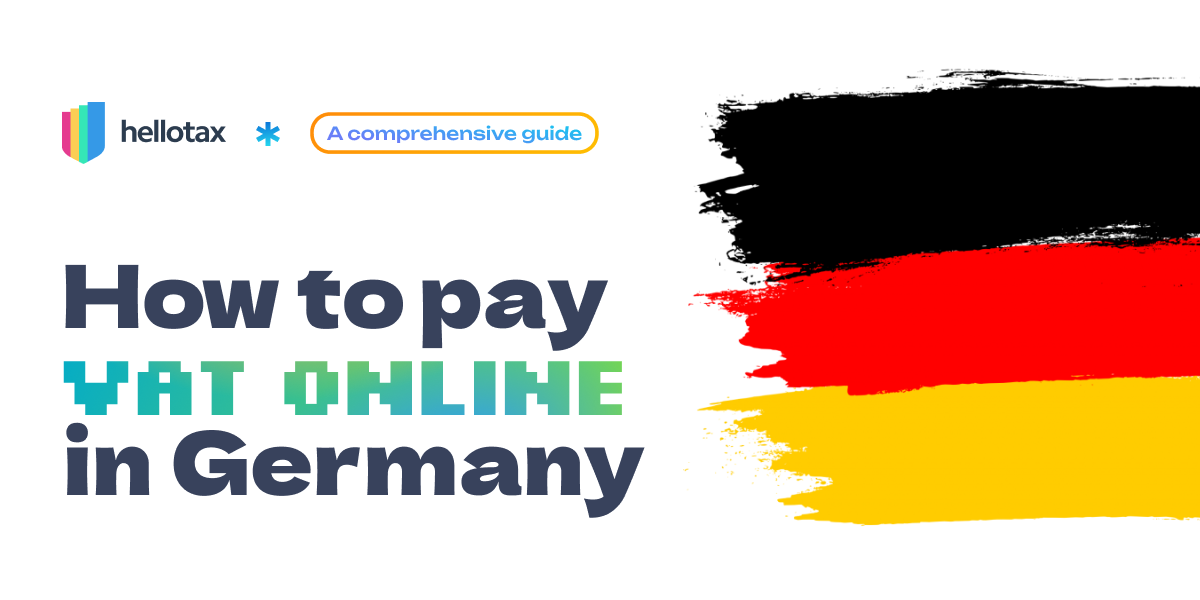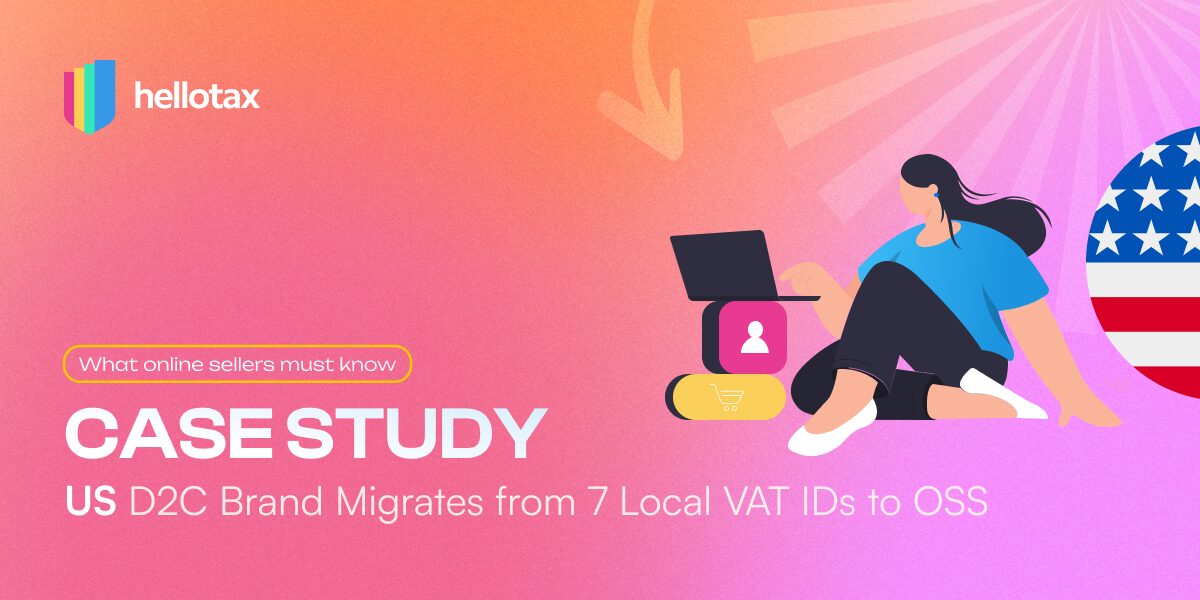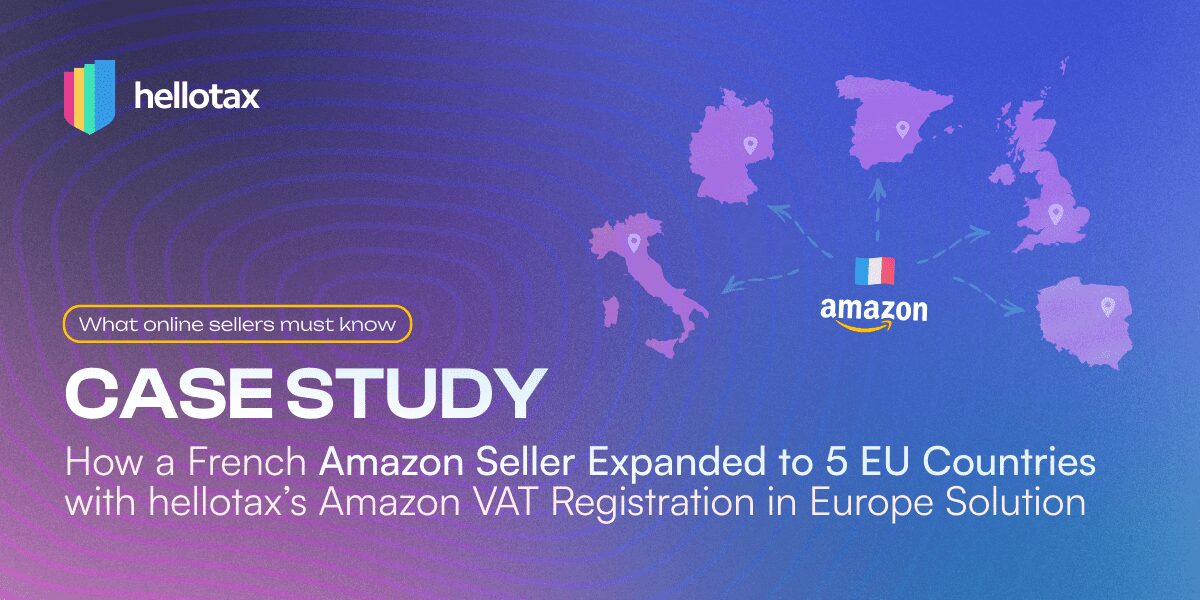Introduction: Why VAT Declarations in Germany Matter
Germany is one of Europe’s largest e-commerce markets, but selling here also means keeping up with strict tax reporting Germany requirements. From VAT declarations to EC Sales Lists and Intrastat, missing a deadline can quickly lead to fines or account issues on platforms like Amazon.
Brenda Varela
Last Updated on 4 November 2025Let’s break down the main tax obligations sellers need to know about VAT declarations in Germany—and how to stay compliant without stress.

1. VAT Declarations in Germany (Umsatzsteuer)
For most online sellers, VAT reporting is the most important compliance duty. In Germany, you must file:
-
Preliminary VAT returns (Umsatzsteuer-Voranmeldung):
- Quarterly is the default frequency when registering for VAT.
- If, during VAT registration, you indicate that the expected VAT payable will exceed €9,000 in the first year, returns default to monthly from the beginning.
- The tax office can review your VAT data at any time and issue a letter to change your filing frequency (this can happen even after just one month)
- Quarterly is the default frequency when registering for VAT.
-
Annual VAT return (Umsatzsteuererklärung): Summarises the year’s VAT and ensures everything reconciles.
-
Optional special advance VAT payment (Sondervorauszahlung): For monthly and quarterly filers, an advance equal to one-eleventh of the previous year’s VAT. This grants one extra month to submit returns. This must be requested annually when the advance payment option is used.
👉 Tip for sellers: Track your VAT payments to know if you can move from monthly to quarterly reporting—this saves time and admin.
Most VAT returns are submitted electronically via the official ELSTER portal, Germany’s digital tax system operated by the Federal Central Tax Office (BZSt).
📌 Related: Learn more about VAT registration in Germany.
2. EC Sales List (Zusammenfassende Meldung – ZM)
If you sell goods or services B2B within the EU, you may need to file an EC Sales List. This tells tax authorities about your cross-border sales.
Threshold-based:
-
If quarterly B2B sales of physical goods exceed €50,000 → report monthly.
-
Otherwise → quarterly.
-
Digital services: Always quarterly, unless combined with high-value goods sales.
Additional compliance detail (2025 update):
-
You must report the VAT ID numbers of your B2B clients and the destination country to the German tax office.
-
This information is exchanged between EU countries, allowing tax authorities to cross-check transactions.
-
Example: If a German company buys goods in Poland, the Polish supplier reports the sale in its EC Sales List. The German buyer is then expected to report this purchase as an intra-community acquisition (ECA) in its German VAT return.
-
Failure to do so can trigger a VAT audit.
-
👉 Watch out: Some sellers confuse this with Intrastat reporting—they are separate obligations!
📌 Related: How to file the EC Sales List in the EU.
3. Intrastat Declarations
While the EC Sales List records transactions, Intrastat tracks the physical movement of goods across EU borders.
-
Arrivals (imports into Germany): Threshold = €800,000.
-
Dispatches (exports from Germany): Threshold = €500,000.
If your business crosses these thresholds, Intrastat reporting becomes mandatory—even if VAT and EC Sales List obligations are already met.
📌 Related: Understand Intrastat thresholds and obligations.
4. OSS Reporting (One Stop Shop)
If you sell directly to EU consumers (B2C), the One Stop Shop (OSS) simplifies VAT. Instead of registering in each country, you file one quarterly OSS return.
-
EU sellers: Once cross-border sales exceed €10,000 per year, you must apply customer-country VAT rates.
-
Non-EU sellers: Germany becomes your “home” authority for OSS reporting.
👉 Benefit for sellers: OSS means one registration, one return, one payment—no need for multiple VAT registrations across the EU.
For detailed official rules, see the European Commission OSS guidance.
📌 Related: Read our complete OSS VAT guide.
5. Compliance Challenges for Sellers
Managing tax reporting in Germany isn’t easy. Common challenges include:
-
Juggling different thresholds for VAT, EC Sales List, and Intrastat.
-
Remembering different deadlines (monthly, quarterly, yearly).
-
Confusing similar reports, e.g. EC Sales List vs Intrastat.
-
Risking penalties or blocked Amazon accounts if declarations are missed.
📌 Related: Avoid common VAT mistakes sellers face.

Book a free consultation
Our VAT experts are happy to help you. Book a free consultation today!
For growing e-commerce sellers, keeping track of VAT declarations in Germany becomes even more important when expanding to additional sales channels or fulfilment methods. Once you sell through multiple platforms such as Amazon, Shopify, and eBay, the data required for accurate VAT declarations in Germany can quickly become complex, as each channel provides different invoicing formats, reporting structures, and sales summaries. To avoid discrepancies or errors in your filings, it is recommended to maintain consistent bookkeeping and centralise all sales and VAT data. This ensures that every transaction is correctly reflected in your VAT declarations in Germany and reduces the risk of audits or compliance gaps.
6. How hellotax Can Help
At hellotax, we make VAT compliance in Germany simple:
-
⚡ Automated VAT registrations & filings → never miss a deadline.
-
📊 Real-time compliance tools → monitor sales, thresholds, and obligations across Europe.
With hellotax, you can focus on growing your Amazon or e-commerce business, while we take care of the paperwork.
👉 Discover how hellotax can support your business in Germany.
Conclusion & Key Takeaway
Germany requires multiple tax declarations: VAT returns, EC Sales List, Intrastat, and OSS reporting. Each has its own thresholds and rules, making compliance tricky.
The key takeaway for VAT declarations in Germany: Staying compliant means tracking your sales and trade activity closely—but with automated tools like hellotax, you can simplify tax reporting in Germany and focus on selling more.
Looking ahead, major changes are on the horizon: the EU’s VAT in the Digital Age (ViDA) reform, adopted in March 2025, will bring real-time VAT reporting and e-invoicing across Europe. Staying proactive now will help you adapt smoothly.






